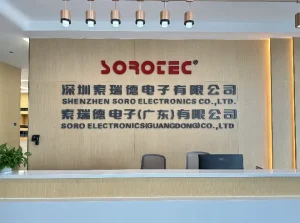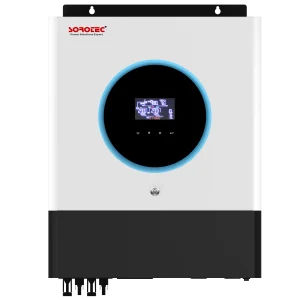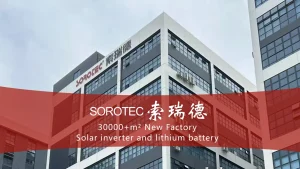A modular inverter is a setup made up of several linked inverter units that can work on their own or together as a team. This kind of design offers a lot of wiggle room and helps create energy solutions that grow with your needs. It’s great because you don’t have to shell out a huge amount of money right away. Instead, you can start with a smaller system and add more power bit by bit as your energy use goes up, without tossing out the old stuff. Some big pluses are the way it spreads out backup options for better dependability, saves money by growing in stages, and comes with smart tricks like balancing power loads and easily hooking up with energy storage setups. SOROTEC’s modular inverters are a perfect example of this, delivering adjustable performance for all sorts of uses—from off-grid setups in remote spots to hybrid systems in homes—while cutting down on downtime and making upkeep a breeze.
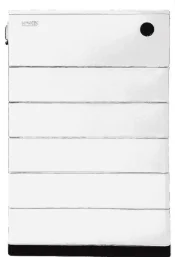
Introducing SOROTEC: Your Partner in Energy Intelligence
If you’re hunting for smart energy solutions, you want someone who gets the tricky ins and outs of solar systems and brings dependable, forward-thinking gear to the table. That’s exactly what SOROTEC offers. With years of know-how in solar inverter tech and a real drive to push boundaries, this company is a leader in renewable energy tools.
Based in Shenzhen, China, SOROTEC focuses on designing, building, and rolling out top-notch solar products for both home and business use. Their lineup includes hybrid and off-grid inverters packed with efficient MPPT controllers, clever load balancing, and smooth connections to energy storage systems.
Whether you’re lighting up a far-off village or tweaking your home’s energy use during high-demand hours, SOROTEC’s modular inverters grow right along with you. Plus, with cool extras like mobile app control through a worldwide cloud platform and built-in dust protection for tough conditions, you can trust their gear to keep running no matter what. Honestly, it’s pretty impressive how they’ve thought of everything!
The Concept Behind Modular Inverter Architecture
Defining Modular Inverter Topology
A modular inverter is a system where several inverter pieces are tied together to act as one big unit. They can run solo or side by side, which gives a ton of flexibility. Each piece adds to the total power output while still being able to stand on its own. This setup is super handy for spread-out solar projects where adding more capacity or having backup options is a must.
Here, modularity isn’t just about how it’s built. It’s also about how each part can work on its own within a bigger plan. You can check, manage, or fix each piece without messing up the whole system.
Benefits of Decentralized Redundancy
One huge perk of modular inverter setups is how they handle backups in a scattered way. If one part breaks or needs a tune-up, the others keep chugging along just fine. This cuts down on system crashes and boosts trustworthiness—a key thing for critical jobs or far-flung spots where getting help isn’t easy.
They’ve got neat features like battery balancing to stretch out lifespan, reserved ports like RS485 and CAN for BMS hookups, a global cloud app for checking things anytime, and two outputs for smart load handling. Each part acts like a brainy little piece in a larger puzzle.
Scalability as a Core Advantage
Flexible Capacity Expansion
You don’t have to go all-in from the start. With a modular inverter, you can begin with a small setup and bump it up as your energy needs climb. Take the SOROTEC, for instance. It works for both on-grid and off-grid hybrid systems, making it a solid pick if you’re adding capacity over time.
This growth also works for power setups. You can scale single-phase outputs by linking multiple units to handle three-phase needs or even bigger loads.
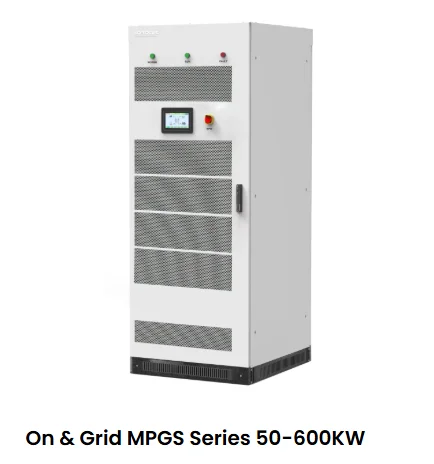
Cost-Efficient System Design
Going modular straight-up saves cash. Rather than buying oversized gear “just in case,” you add pieces only when you really need them. This step-by-step spending keeps your upfront costs low while making sure every part gets used to the fullest.
For example, single-phase output can hit 36KW with 6 units, and three-phase output works with 3 units for 18KW or up to 6 units for 36KW. This kind of choice lets you shape the system to match your real power needs instead of just guessing.
Application Scenarios Where Modularity Excels
Off-Grid Installations in Remote Areas
Off-grid situations call for toughness and freedom from main power lines. That’s where modular systems really stand out, especially in projects like bringing power to rural areas or setting up telecom towers way out in the middle of nowhere.
The REVO VP/VM Series Off-Grid Inverter is a strong, dependable choice for off-grid solar setups. Its pure sine wave output plays nice with delicate gadgets, and the MPPT charger squeezes every bit of juice from solar panels even when the weather’s iffy.
If you’re after a tough off-grid option with battery balancing and cold-start features, check out the REVO VP/VM Series. It ranges from 1.2KW to 5KW, fitting a variety of needs.
Residential Hybrid Systems with Variable Loads
In city areas where the grid comes and goes or power prices change by the hour, hybrid systems with clever load juggling make a world of difference. Modular inverters let you shift power around smartly. They can keep vital devices running during blackouts or adjust based on cheaper grid rates.
With settings for AC/PV output timing and priority, homeowners can tweak how energy moves through their place depending on the time or battery level. It’s a game-changer for managing costs.
Enhancing System Reliability Through Module-Level Control
Independent Operation Within a Unified Framework
Every piece in a modular inverter group works on its own but still chips in for the big picture. This makes it easier to spot and fix issues. If one part flops, the whole system doesn’t go down with it.
Take the Off Grid VM III-T Series as an example. It offers this kind of solo control with detachable LCD screens that make troubleshooting a snap and cut downtime during repairs.
Simplified Maintenance Protocols
Fixing things gets way easier when you can pinpoint problems to just one module without shutting everything off. Techs can swap or repair single units while the rest keeps humming along—a real win for businesses that can’t afford to stop.
Features like a movable LCD control module with multiple connection options in the 4/6kW series, along with setups that work without a battery, hooked to solar or utility inputs, just add to the ease.
Smart Load Management Capabilities
Dynamic Power Allocation Based on Priority Loads
Smart load handling isn’t only about saving power. It’s about keeping the important stuff running when there’s not much to go around. Modular systems often have two outputs, letting you set schedules based on battery levels or grid status.
The second output can be turned on or off based on a set battery-to-utility switch point. So, you can make sure things like fridges or medical gear stay on during outages while holding off on less urgent stuff like pool pumps.
Integration with Energy Storage Systems
For the best results, your inverter needs to talk smoothly with batteries. Modular designs are awesome at this. Most models come with built-in RS485/CAN ports, ready to work with advanced Battery Management Systems (BMS) right away.
They also have battery balancing to make batteries last longer, plus those reserved ports for easy BMS connections. It’s all about keeping things running efficiently.
Optimizing Performance Through Intelligent Monitoring Platforms
Real-Time Data Visibility via Mobile Apps and Cloud Portals
Keeping an eye on energy systems is key to managing them well. Today’s modular inverters often have Wi-Fi built in, linking straight to cloud dashboards you can pull up on a mobile app—no extra local setup needed.
You can watch and tweak your energy system from anywhere using SOROTEC’s global cloud platform and app. It shows live stats on power creation, battery health, and any hiccups, right at your fingertips.
Adaptive Firmware Updates for Long-Term Efficiency Gains
Updates sent straight to your device over the air keep your inverter in step with new rules without any hands-on hassle. Smart programs tweak how it runs based on past data, boosting output year after year without needing new hardware.
Addressing Installation Flexibility and Space Constraints
Compact Footprint With High Power Density
Space is often tight, especially on home rooftops or in small telecom huts. Modular setups let you install just what fits now while still hitting your power goals later by adding units side by side.
Options like 8000VA, 12000VA, or 4000VA/4000W up to 6000VA/6000W, with 48VDC to 63VDC ranges and max PV input current of 27A in the 4/6kW Hybrid On & Off Grid Energy Storage Inverter series, pack a punch without hogging space.
Simplified Wiring Layouts Reduce Labor Costs
Less wiring means quicker setups and fewer chances for things to go wrong down the road. Built-in connectors made for easy plug-and-play cut setup time a lot while keeping things tidy and reliable for the long haul.
FAQ
Q1: Can I expand my system later if I start small?
A: Absolutely, modular inverter systems let you add more units as your energy needs grow, without swapping out what’s already there.
Q2: Do I need batteries for these systems?
A: Not always—the REVO VM IV PRO-T series can run without batteries, giving you options based on your budget or setup.
Q3: How does smart load management work?
A: It uses two outputs where the second one can switch on or off based on a set battery-to-utility point, letting you control which devices get priority.


